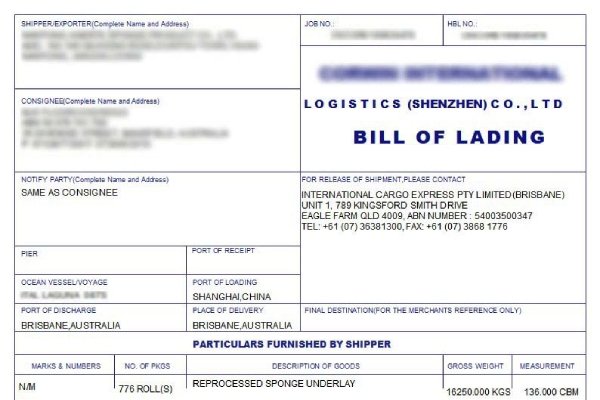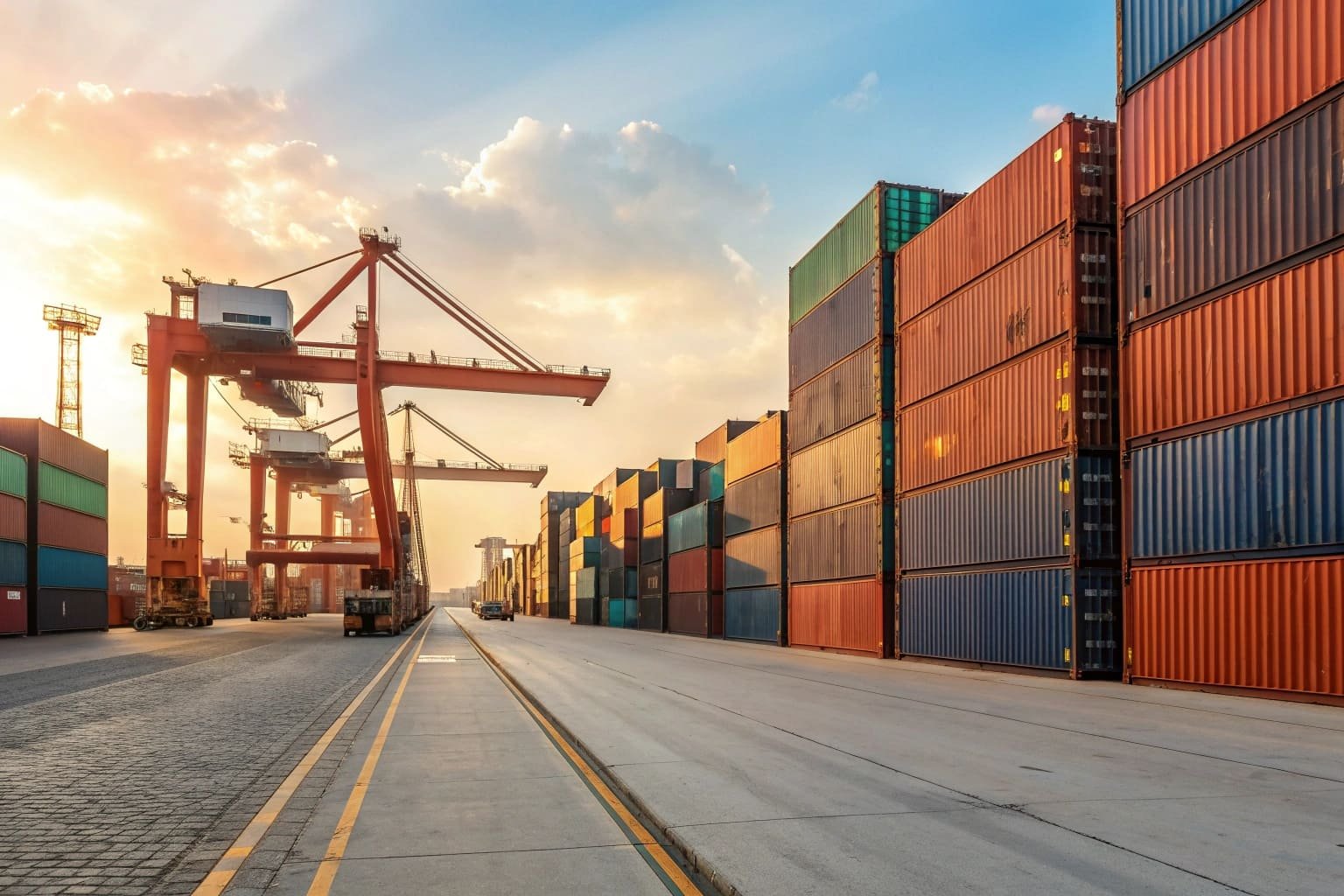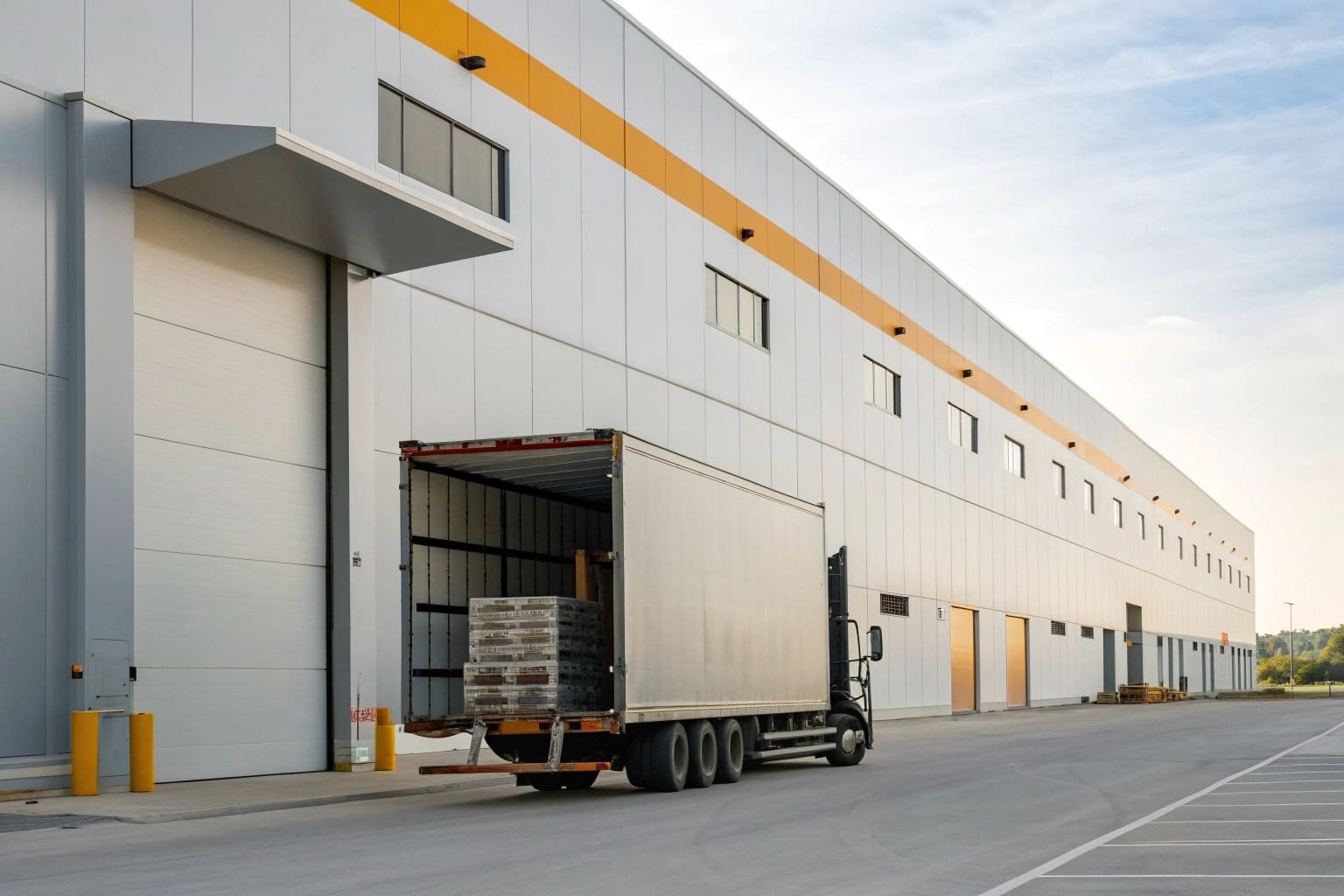In today’s globalized world, more and more businesses are engaging in international trade. For buyers or companies just starting to work with overseas suppliers, logistics is a complex and critical aspect. Whether the goods are shipped by land, sea, or air, the entire process from the sender to the final destination relies on the use of a Bill of Lading. The Bill of Lading is not only the legal proof of the cargo transportation contract but also a key document in transaction stages like delivery and payment.
Two of the most common types of Bills of Lading are the House Bill of Lading (HBL) and the Master Bill of Lading. In this article, we will explore the differences between these two types of bills, focusing on the benefits of using a House Bill of Lading (HBL). We’ll explain why working with a freight forwarding company like Mbmlog can greatly simplify the logistics process, reduce risks, and provide more flexibility for novice buyers.
Definitions : House Bill of Lading (HBL) and Master Bill of Lading
To understand the differences between the Freight Forwarder’s Bill of Lading and the Master Bill of Lading, it’s important to start with their definitions and respective roles.
- House Bill of Lading (HBL): This is a bill issued by a freight forwarding company, serving as proof of the contract for the transportation of goods. The freight forwarder is responsible for receiving the goods from the sender and arranging their transport to the destination. Freight Forwarder’s Bills of Lading are often used in multimodal transport, involving a combination of sea, land, and air transport, and cover the entire logistics process.
- Master Bill of Lading: A Master Bill of Lading is issued by the actual carrier (usually a shipping company) and is generally used for a single sea transport leg. It serves as proof of the transportation of goods from the port of origin to the destination port. It is the traditional sea freight bill and holds strong legal status in international trade.
These two types of bills differ significantly in terms of transportation models, responsibility, and operational flexibility. Understanding their differences can help you choose the right logistics solution.
Cost Comparison: HBL & MBL
When comparing the House Bill of Lading (HBL) and Master Bill of Lading (MBL), cost is a key factor that depends on several elements, including the type of service, intermediaries involved, and logistics complexity. Below is a breakdown of the cost differences between the two:
1. House Bill of Lading (HBL) Costs
The House Bill of Lading (HBL) is issued by a freight forwarder, and the cost structure typically includes additional services provided by the forwarder. These costs can vary based on the specific services required, such as consolidation, warehousing, customs clearance, and multimodal transport. Freight forwarders charge for their coordination services, which can increase the overall cost.
Factors Influencing HBL Costs:
- Freight Forwarder’s Fees: Freight forwarders add service fees for managing the logistics, which can include arranging transport, handling paperwork, and providing value-added services like warehousing or customs brokerage.
- Consolidation Charges (LCL): If you are shipping smaller amounts of cargo that require consolidation with other shipments (LCL), there are costs associated with this process. This is more common in HBL scenarios.
- Multimodal Transport: HBL is commonly used for multimodal transport (combining different transport methods like sea, land, or air). This complexity increases handling fees, potentially leading to higher costs.
- Customs and Administrative Fees: Freight forwarders often manage customs clearance and other administrative tasks, which may add additional charges.
Cost Summary:
- Higher Service Fees: The involvement of freight forwarders adds service fees, which may increase costs.
- More Flexibility: While costs may be higher, HBL provides more flexibility and additional services (e.g., door-to-door delivery, handling of different transport modes).
2. Master Bill of Lading (MBL) Costs
The Master Bill of Lading (MBL) is issued directly by the shipping line or carrier and typically involves fewer intermediaries. The costs associated with MBL are generally more straightforward, focusing on the direct cost of sea freight. In many cases, MBL is used for Full Container Load (FCL) shipments, where the shipper has enough cargo to fill an entire container.
Factors Influencing MBL Costs:
- Direct Carrier Fees: The cost of the MBL is generally lower since it eliminates the freight forwarder's service fees. Shipping lines charge for transporting the goods but don’t offer the extra services that a freight forwarder does.
- Simpler Transport Mode (FCL): MBL is typically used for single-mode transport, such as full container load (FCL) via sea freight. This reduces the need for multimodal coordination, keeping costs lower.
- Fewer Intermediaries: Since MBL involves direct dealings with the shipping carrier, there are fewer intermediary fees, which can make MBL less expensive than HBL, especially for large-scale, straightforward shipments.
Cost Summary:
- Lower Fees for Direct Shipping: Since no freight forwarder is involved, there are typically lower service fees with MBL, making it a more cost-effective option for large shipments and straightforward transportation.
- Less Flexibility: While costs may be lower, the services offered with MBL are usually limited to port-to-port transportation, without the additional benefits that come with HBL, like door-to-door service or complex logistics management.
3. Key Cost Differences: HBL vs. MBL
| Factor | House Bill of Lading (HBL) | Master Bill of Lading (MBL) |
|---|---|---|
| Service Fees | Higher, includes freight forwarder services | Lower, fewer intermediaries |
| Consolidation (LCL) Charges | Higher for small shipments (LCL) | Typically used for FCL, lower for large shipments |
| Multimodal Transport Costs | Higher, involves multiple modes of transport | Lower, usually single-mode (sea freight) |
| Customs & Handling Fees | Freight forwarder typically handles it, adds cost | Handled by the shipper or an agent |
| Flexibility and Services | More flexible, includes door-to-door, customs, warehousing | Less flexible, port-to-port |
4. Which is More Cost-Effective?
- House Bill of Lading (HBL): More expensive overall due to additional services offered by the freight forwarder. It is ideal for smaller shipments (LCL), complex logistics requirements (multimodal transport), or if you need door-to-door service, customs brokerage, or warehousing.
- Master Bill of Lading (MBL): Typically less expensive since it’s used for more straightforward shipments (mainly FCL) and involves fewer intermediaries. Best for large shipments where you deal directly with the carrier and don’t need additional services from a freight forwarder.
How to Choose HBL and MBL Based on Cost ?
- If you have a small shipment, need multimodal transport, or require additional services (like customs handling, warehousing, or LCL shipments), the HBL might be the better option despite higher costs, as it offers more flexibility and service coverage.
- If your shipment is large, straightforward, and you’re handling a full container (FCL) or port-to-port shipping without needing additional logistics support, the MBL is likely more cost-effective, offering lower overall fees due to the lack of intermediaries.
Benefits of the House Bill of Lading (HBL)
For novice buyers, opting for a House Bill of Lading (HBL)offers several advantages, especially if you are looking to simplify your operations, reduce logistics risks, and enjoy more value-added services. Here are the key benefits of a Freight Forwarder’s Bill of Lading:
One-Stop Logistics Solution
By using a House Bill of Lading (HBL), you can access a one-stop logistics service through freight forwarders like Mbmlog. Freight forwarding companies not only handle the receipt of goods from the sender but also take care of transportation, customs clearance, warehousing, and more. As a novice buyer, you won’t need to communicate and coordinate with multiple carriers; the freight forwarder will manage the entire logistics process for you.
Advantages:
- Fewer intermediaries, saving you time and effort.
- Professional teams handle the full service, ensuring smooth transportation processes.
Flexibility in Multimodal Transport
One of the key advantages of the Freight Forwarder’s Bill of Lading is its ability to support multimodal transport. If your cargo needs to be transported using a combination of different modes, such as land and sea or sea and air, the Freight Forwarder’s Bill of Lading can cover the entire process. In contrast, the Master Bill of Lading usually applies only to a single sea transport leg, and if the goods need to travel from or to an inland location, it becomes less flexible.
Advantages:
- The House Bill of Lading (HBL) can better handle complex logistics needs, offering higher flexibility in transport.
- Optimized transport routes reduce shipping time and costs.
Real-Time Tracking and Transparency
Transparency in cargo transportation is crucial for buyers. By using a Freight Forwarder’s Bill of Lading, you can access real-time tracking services provided by the freight forwarder. With Mbmlog, customers have access to advanced logistics tracking systems. Simply log in to the system to check the current location and estimated arrival time of your cargo.
Advantages:
- Real-time tracking of cargo status, reducing uncertainty.
- Allows you to make timely adjustments and respond to unexpected situations.
Personalized Service and Customized Solutions
When working directly with shipping companies, you typically receive standardized services. However, freight forwarders like Mbmlog can offer personalized services tailored to your needs, including warehousing, consolidation, and customs clearance. The Freight Forwarder’s Bill of Lading allows the freight forwarder to create solutions customized to meet your specific logistics requirements. This flexibility is particularly valuable for novice buyers, as they often need more support and guidance.
Advantages:
- Tailored logistics solutions ensure your specific needs are met.
- The freight forwarder provides dedicated customer support to help resolve any logistics issues.
Risk Management and Emergency Response
In international logistics, unforeseen events such as bad weather, port congestion, or customs issues can occur. When using a Freight Forwarder’s Bill of Lading, freight forwarders like Mbmlog can provide more flexible contingency plans in the event of an emergency. They can quickly adjust transport routes or switch to alternative modes of transport to ensure that goods arrive on time.
Advantages:
- Greater flexibility in making adjustments to avoid major delays due to unexpected situations.
- Freight forwarders have extensive experience in helping you manage transport risks effectively.
Cost Control and Value-Added Services
Although freight forwarders may charge a service fee, by working with them, you can access more value-added services such as consolidation, warehousing, sorting, and insurance. These services help you better control overall costs, especially for first-time buyers with smaller shipment volumes. By optimizing transportation methods, freight forwarders can offer you more competitive pricing.
Advantages:
- Integrating services through the freight forwarder lowers transportation and warehousing costs.
- Value-added services like cargo insurance and consolidation reduce logistics risks.
Drawbacks of the Master Bill of Lading
While the Master Bill of Lading (MBL) may hold stronger legal standing in some cases, it also comes with significant limitations, especially for novice buyers navigating complex international logistics. Here are some common drawbacks of the Master Bill of Lading:
Limited Support for Multimodal Transport
The Master Bill of Lading typically only applies to single sea transport, and it does not support combined modes of transport such as air, land, or multimodal shipping. If your cargo needs to be transported using a combination of different modes, the Master Bill of Lading’s single-mode limitation is a major drawback. In contrast, the Freight Forwarder’s Bill of Lading can flexibly handle multimodal transport, ensuring smooth delivery from start to finish.
Drawbacks:
- Limited to single transport modes, unable to support multimodal shipping needs.
- Requires you to coordinate with multiple carriers, adding complexity to operations.
Lack of Value-Added Services
Shipping companies typically focus solely on sea transport and do not offer services like warehousing, consolidation, or customs clearance. These services are crucial for novice buyers, especially when handling various stages of the logistics process. Compared to the Freight Forwarder’s Bill of Lading, the Master Bill of Lading lacks the value-added services that simplify logistics and reduce the buyer's management burden.
Drawbacks:
- No access to value-added services, increasing management costs and complexity.
- Only basic transport services are available, limiting flexibility.
Lack of Dedicated Customer Support
Unlike freight forwarding companies, shipping lines rarely offer dedicated support teams for each customer. As a novice buyer, you may need more guidance and assistance when facing logistics challenges, and the Master Bill of Lading cannot provide this level of support. In contrast, freight forwarding companies offer 24/7 dedicated customer service, ensuring you have professional help available for any logistics issues.
Drawbacks:
- You need to manage all transport problems on your own, with little support.
- No access to dedicated customer service, increasing communication difficulties.
Insufficient Risk Management
When unexpected issues arise, such as transport delays or customs problems, the Master Bill of Lading does not offer flexible solutions. Shipping companies may not be able to act quickly, leading to delays in cargo delivery. Conversely, freight forwarding companies like Mbmlog have stronger risk management capabilities and can adjust shipping plans accordingly, ensuring timely delivery of your goods.
Drawbacks:
- Limited ability to manage risks, increasing the likelihood of delays.
- No flexible solutions available to quickly address unexpected situations.
House Bill of Lading (HBL) vs. Master Bill of Lading (MBL): Applications
House Bill of Lading (HBL) and Master Bill of Lading (MBL) serve different purposes in international logistics, based on who issues them and their respective functions. Below, we explore the specific application scenarios where each type of Bill of Lading is best suited.
1. Application Scenarios for House Bill of Lading (HBL)
The House Bill of Lading (HBL) is issued by a freight forwarder and is commonly used in more complex logistics situations, especially when additional services or multimodal transport are required. Key scenarios include:
Multimodal Transport
HBL is ideal when goods need to be shipped using multiple transportation modes (such as sea, land, and air). The freight forwarder manages the entire process from origin to destination, coordinating different stages of transport, warehousing, and consolidation services.
Less-than-Container Load (LCL) Shipments
HBL is commonly used in LCL shipments, where smaller shipments are consolidated into one container. In such cases, the freight forwarder issues HBLs to each shipper, efficiently managing multiple clients’ cargo and ensuring that each shipment’s needs are met.
Need for Value-Added Services
When shippers require additional services such as warehousing, customs clearance, or insurance, the HBL is a better choice. Freight forwarders can handle these extra services and offer more flexible transportation solutions tailored to the shipper's needs.
Small Businesses or First-Time Traders
HBL’s flexibility makes it particularly suitable for small businesses or companies new to international trade. These businesses often prefer to rely on a freight forwarder to handle the complexities of logistics, and the HBL allows for smoother processes and reduced risks.
2. Application Scenarios for Master Bill of Lading (MBL)
The Master Bill of Lading (MBL) is issued by the actual carrier (such as a shipping line) and is best used for simpler, more direct shipping needs, particularly when dealing with a single transportation method like sea freight. Key scenarios include:
Full Container Load (FCL) Shipments
When a shipper has enough cargo to fill an entire container, MBL is typically used. FCL shipments involve a single mode of transport, and the carrier issues an MBL as the legal contract for the transportation. The MBL ensures a direct relationship between the shipper and the carrier, providing legal security.
Letter of Credit (L/C) Payments
In international trade where payments are made via a Letter of Credit, MBL is often required, as banks typically prefer to accept an MBL as proof of shipment for payment purposes. The MBL's strong legal status and ownership documentation make it widely used in transactions involving large quantities of goods.
Direct Shipping
For large enterprises or companies with stable logistics operations, MBL is suitable when they deal directly with carriers. These companies may have the internal capacity to manage logistics themselves, reducing the need for a freight forwarder. MBL provides a more direct and legally secure shipping process in such cases.
Large-Scale or Long-Term Trade Partnerships
For large-volume shipments and long-term partnerships between trading partners, MBL is the better option. It ensures the integrity of the transportation contract, with the carrier legally responsible for the safe and timely delivery of the goods. This reduces intermediaries and streamlines the trade process.
How to Choose Between House Bill of Lading (HBL) and Master Bill of Lading (MBL)
Complexity of Transport Needs
- HBL: Ideal for scenarios requiring multimodal transport, value-added services, or LCL shipments, especially when the shipper prefers to simplify complex logistics operations.
- MBL: Best suited for single-mode transportation, FCL shipments, or bulk commodity shipping, particularly when the shipper prefers a direct relationship with the carrier.
Size and Type of Business
- HBL: Provides more support and flexibility for small businesses or those new to international trade, helping them navigate the complexities of logistics.
- MBL: Suitable for large businesses with experience in handling logistics or for those engaged in bulk transactions and long-term trade partnerships.
Payment Methods
- HBL: In some cases, HBL may not be accepted by banks for Letter of Credit payments. If you are using a Letter of Credit, it may be necessary to consider using an MBL.
- MBL: In transactions involving Letters of Credit, MBL is typically required by banks as the standard document for payment, making it more appropriate in this context.
Conclusion:
As an experienced freight forwarding company, Mbmlog offers customers a wide range of logistics services, including sea, land, and air transport, as well as multimodal solutions, warehousing, customs clearance, and more. Our House Bill of Lading (HBL) service not only provides you with full transparency and real-time tracking of your goods but also allows us to create customized logistics solutions to ensure your goods are delivered safely and efficiently. For novice buyers, working with Mbmlog and choosing the House Bill of Lading (HBL) will be your best decision for optimizing your international logistics process and reducing risks.
Whether you are new to international trade or seeking more efficient logistics solutions, Mbmlog can provide the professional support and services you need. Choosing the Freight Forwarder’s Bill of Lading makes your international logistics journey simpler and smoother.






